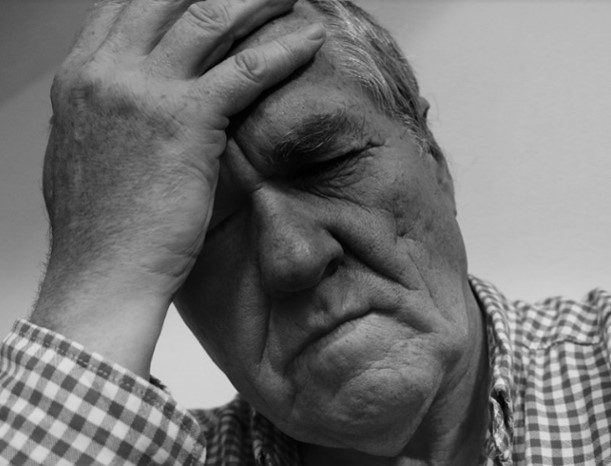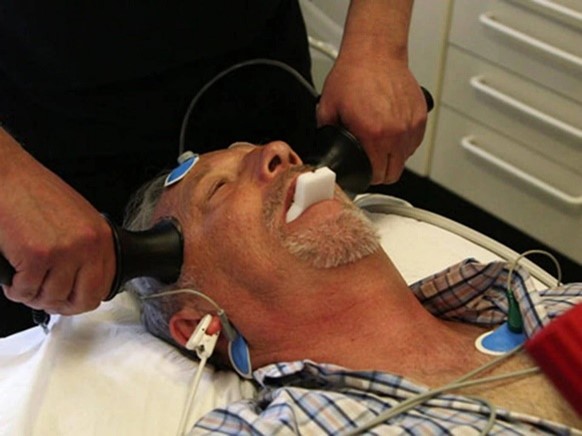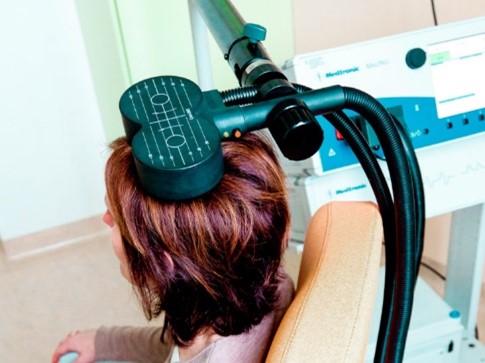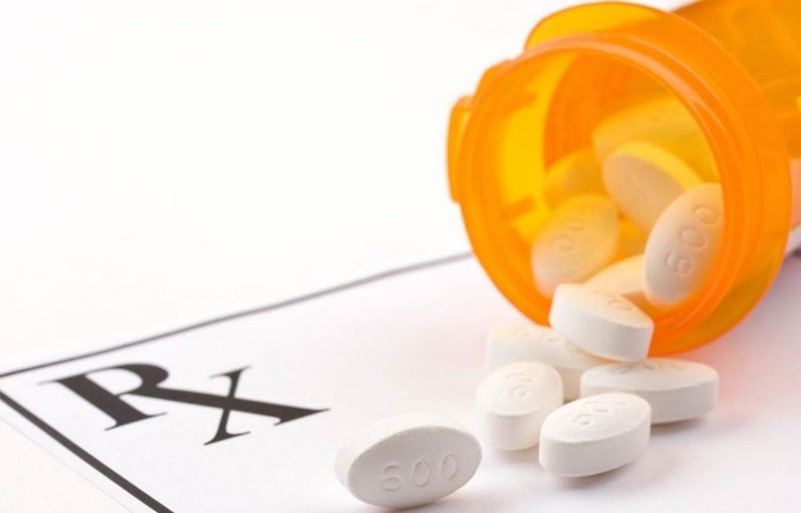Well That’s Certainly Depressing
Well That’s Certainly Depressing
Author: Mark Parkinson BsPharm: President AFC-CE
Credit Hours 2 - Approximate time required: 120 min.
Educational Goal
Discuss aspects of clinical depression and its management.
Educational Objectives
- Define what clinical depression is
- List the signs and symptoms of depression
- Discuss the risk factor for developing depression
- Explain therapeutic options
- Cover the drugs used in thyroid therapy
- Tell how In-home caregivers can manage affected residents
Procedure:
Read the course materials. 2. Click on exam portal [Take Exam]. 3. If you have not done so yet fill in Register form (username must be the name you want on your CE certificate). 4. Log in 5. Take exam. 6. Click on [Show Results] when done and follow the instructions that appear. 7. A score of 70% or better is considered passing and a Certificate of Completion will be generated for your records.
Disclaimer
The information presented in this activity is not meant to serve as a guideline for patient management. All procedures, medications, or other courses of diagnosis or treatment discussed or suggested in this article should not be used by care providers without evaluation of their patients’ Doctor. Some conditions and possible contraindications may be of concern. All applicable manufacturers’ product information should be reviewed before use. The author and publisher of this continuing education program have made all reasonable efforts to ensure that all information contained herein is accurate in accordance with the latest available scientific knowledge at the time of acceptance for publication. Nutritional products discussed are not intended for the diagnosis, treatment, cure, or prevention of any disease.
Well That’s Certainly Depressing
Residents in care homes are always at greater risk for depression. The stress of changing living environments, health issues, and reductions in personal freedoms can make anyone depressed. Good caregiving techniques can reduce or eliminate such factors. But when depression remains or returns, what does an In-home caregiver do? When does regular unhappiness turn into clinical depression? Can clinical depression be “cured”? We will explore these and other questions in this course on depression.
Depression, what is it?
“Sometimes we eat the bear and sometimes the bear eats us”.
Our lives are full of stresses. When those stressors become overwhelming it is natural to get feelings of depression. I believe that these “down” feelings are a defense mechanism that slows us down and protects us from even greater harm. Depressive feelings slow us down to protect us from overextending ourselves, both physically and mentally. It helps us reflect onwhat is transpiring in our lives. In those times of reflection, we can find the solutions that enables us to cope with what is going on around us. After a “good cry” often we feel rested and cleansed. We start to feel better about our circumstances and can jump back into the fight.
Our body's depression processes are multifactorial and are not fully understood. Studies show that brain structure, genetics, biological, environmental, and psychological factors can play a role in depression. We do know that there are a number of hormonal responses and  neurochemical chemical changes involved. In layman's terms, there are chemical start and stop buttons that our bodies use to regulate the depression reaction process. As we move through life, these buttons can be pushed or triggered by the circumstances that we experience. Depressive symptoms can be triggered as a side effect of medication. The pathophysiology of diseases can trigger the depression response and is seen as a symptom in many diseases. There are also those whose depression-causing mechanisms get stuck or are broken and they experience what we call “clinical” depression.
neurochemical chemical changes involved. In layman's terms, there are chemical start and stop buttons that our bodies use to regulate the depression reaction process. As we move through life, these buttons can be pushed or triggered by the circumstances that we experience. Depressive symptoms can be triggered as a side effect of medication. The pathophysiology of diseases can trigger the depression response and is seen as a symptom in many diseases. There are also those whose depression-causing mechanisms get stuck or are broken and they experience what we call “clinical” depression.
What are the Types of Depression?
With so many causative factors involved, it is only natural that there are different types of depression. Common forms of depression are:
- Major Depression, which includes symptoms of depression most of the time for at least 2 weeks. Episodes typically interfere with one’s ability to work, sleep, study, and eat.
- Persistent Depressive Disorder (dysthymia), which often includes less severe symptoms of depression that last much longer, typically for at least 2 years.
- Perinatal Depression, which occurs when a woman experiences major depression during pregnancy or after delivery (postpartum depression).
- Seasonal Affective Disorder, which comes and goes with the seasons, typically starting in late fall and early winter and going away during spring and summer.
- Depression with Symptoms of Psychosis, which is a severe form of depression where a person experiences psychosis symptoms, such as delusions (disturbing, false fixed beliefs) or hallucinations (hearing or seeing things that others do not see or hear).
Source https://www.nimh.nih.gov/health/publications/depression#pub1
What are the Signs and Symptoms of Depression?
Depression is a disorder that is more than just feeling blue. It is a medical condition that has observable signs and symptoms which range from mild, to moderate to severe. Common symptoms of depression include:
- Persistent sad, anxious, or “empty” mood
- Feelings of hopelessness or pessimism
- Feelings of irritability, frustration‚ or restlessness
- Feelings of guilt, worthlessness, or helplessness
- Loss of interest or pleasure in hobbies or activities
- Decreased energy, fatigue, or being “slowed down”
- Difficulty concentrating, remembering, or making decisions
- Difficulty sleeping, early morning awakening, or oversleeping
- Changes in appetite or unplanned weight changes
- Aches or pains, headaches, cramps, or digestive problems without a clear physical cause that do not ease even with treatment
- Suicide attempts or thoughts of death or suicide
- Increase in purposeless physical activity (e.g., inability to sit still, pacing, handwringing) or slowed movements or speech
- Unexplained physical problems, such as back pain or headaches
It may make it easier for a caregiver to have a list of recognizable symptoms but in depression, it is not so cut and dry. Though the same chemical buttons are being pushed, how we respond to those chemical processes can be different in each patient. Outward signs can even change as the patient ages and develop different coping strategies.
- Children with depression may be anxious, and cranky, pretend to be sick, refuse to go to school, cling to a parent, or worry that a parent may die.
- Older children and teens with depression may get into trouble at school, sulk, be easily frustrated‚ feel restless, or have low self-esteem. They also may have other disorders, such as anxiety and eating disorders, attention-deficit hyperactivity disorder, or substance use disorder. Older children and teens are more likely to experience excessive sleepiness (called hypersomnia) and increased appetite (called hyperphagia). In adolescence, females begin to experience depression more often than males, likely due to the biological, life cycle, and hormonal factors unique to women.
- Younger adults with depression are more likely to be irritable, complain of weight gain and hypersomnia, and have a negative view of life and the future. They often have other disorders, such as generalized anxiety disorder, social phobia, panic disorder, and substance use disorders.
- Middle-aged adults with depression may have more depressive episodes, decreased libido, middle-of-the-night insomnia, or early morning awakening. They also may more frequently report having gastrointestinal symptoms such as diarrhea or constipation.
- Older adults with depression commonly experience sadness or grief or may have other less obvious symptoms. They may report a lack of emotions rather than a depressed mood. Older adults also are more likely to have other medical conditions or pain that may cause or contribute to depression. In severe cases, memory and thinking problems (called pseudodementia) may be prominent.
Source https://www.nimh.nih.gov/health/publications/depression#pub1
It has been shown that men and women tend to show depression symptoms differently. Depression in women may occur earlier, last longer, and be more likely to recur than depression in men.
Men are likely to have:
- changes in appetite
- fatigue
- low self-esteem
- sleep disturbances
- misusing alcohol or other substances
- irritability, frequent outbursts, or “explosive” anger
- risk-taking (such as reckless driving or substance-impaired driving)
- escapism (e.g., working late, spending more time at the gym, playing video games for hours)
Women have tendencies to:
- Ruminate over their circumstances
- Have depressive episodes associated with stressful life events and be more sensitive to seasonal changes.
- Experience guilty feelings and attempt suicide, although they actually kill themselves less often than men.
- Be more likely to be associated with anxiety disorders (especially panic and phobic symptoms) and eating disorders.
Though we can all recognize the symptoms of depression it takes a skilled doctor to make a depression diagnosis. For a doctor to make a diagnosis of depression, a patient must have at least five depression symptoms every day, nearly all day, for at least 2 weeks. These symptoms must be a change in previous levels of functioning and one of the symptoms must be a depressed mood or a loss of interest or pleasure in almost all activities.
Are Their Risk Factors for Developing Depression?
Depression can affect anyone, even a person who seems to live in the best of surroundings.
 According to the Anxiety and Depression Association of America “At any point in time, 3 to 5 percent of people suffer from major depression; the lifetime risk is about 17 percent.”
According to the Anxiety and Depression Association of America “At any point in time, 3 to 5 percent of people suffer from major depression; the lifetime risk is about 17 percent.”
 The National Institute of Mental Health estimates that figure to be even higher “In 2017, around 17.3 million adults age 18 or older in the U.S. had experienced at least one major depressive episode in the last year (6.7% of adults in the U.S)”
The National Institute of Mental Health estimates that figure to be even higher “In 2017, around 17.3 million adults age 18 or older in the U.S. had experienced at least one major depressive episode in the last year (6.7% of adults in the U.S)”
Some factors that appear to play a role in developing a depressive episode include:
- Biochemistry: Differences in certain chemicals in the brain may contribute to symptoms of depression.
- Genetics: Depression can be inherited and run in families. It has been shown that if one identical twin has depression, the other has a 70 percent chance of having the illness sometime in life.
- Personality: People with low self-esteem, who are easily overwhelmed by stress, or who are generally pessimistic appear to be more likely to experience depression.
- Environmental factors: Continuous exposure to violence, neglect, abuse or poverty may make some people more vulnerable to depression
- Physical: Patients experiencing long-term physical ailments can have their coping mechanisms overwhelmed or depleted and develop depression symptoms.
Disclaimer: I’m a pharmacist, and I tend to see everything as chemical reactions. I wrote this course with that in mind because I think it makes it easier to understand. But I admit I am a chemical geek. I acknowledge that there are other ways of looking at the data that may be used in understanding depression cases. So don’t get too caught up in seeing all things mental health as mixed-up brain chemicals. That can be as harmful as thinking that all mental health cases are a result of a weak character.
How Is Depression Treated?
 Even though depression is a very common occurrence fortunately it is among the most treatable of mental disorders. Between 80 and 90 percent of people with depression eventually respond well to treatment. Almost all patients gain some relief from their symptoms and develop some coping skills. Broadly categorized, treatments involve creating a supportive environment, psychotherapy, medication, and brain stimulation therapy. Providing support can be applied to all cases while psychotherapy and medication can be applied alone or in combination. Brain stimulation is usually reserved for treatment-resistant cases.
Even though depression is a very common occurrence fortunately it is among the most treatable of mental disorders. Between 80 and 90 percent of people with depression eventually respond well to treatment. Almost all patients gain some relief from their symptoms and develop some coping skills. Broadly categorized, treatments involve creating a supportive environment, psychotherapy, medication, and brain stimulation therapy. Providing support can be applied to all cases while psychotherapy and medication can be applied alone or in combination. Brain stimulation is usually reserved for treatment-resistant cases.
Creating a supportive environment
Creating a supportive environment as therapy for depression is trying to reduce stressors that may trigger or aggravate depression symptoms. It is also taking care of the activities of daily living so patients can concentrate on coping with their illness. This is what care homes do best. There are ways to fine-tune what you do to be more effective in managing depressive patients…. more about this later.
I have had no training or experience in psychotherapy, so as not to lead you astray I will just quote from the National Institute of Mental Health website.
“Psychotherapy (also called “talk therapy” or “counseling”) teaches individuals with depression new ways of thinking and behaving and helps with changing habits that contribute to depression. Most psychotherapy occurs with a licensed, trained mental health professional in one-on-one sessions or with other individuals in a group setting. Two effective psychotherapies to treat depression include Psychotherapy (CBT) and interpersonal therapy (IPT). The use of older forms of psychotherapy, such as dynamic therapy, for a limited time also may help some people with depression.
With CBT, people learn to challenge and change unhelpful thinking patterns and behavior to improve their depressive and anxious feelings. Recent advances in CBT include introducing mindfulness principles and the development of specialized forms of therapy targeting particular symptoms, such as insomnia.
IPT focuses on interpersonal and life events that impact mood and vice versa. The goal of IPT is to help people improve their communication skills within relationships, establish social support networks, and develop realistic expectations to help them deal with crises or other issues that may be contributing to or worsening their depression.”
Source https://www.nimh.nih.gov/health/publications/depression#pub1
Let me augment this explanation with a quote from the American Psychiatric Association website.
“Psychotherapy, or “talk therapy,” is sometimes used alone for the treatment of mild depression; for moderate to severe depression, psychotherapy is often used along with antidepressant medications. Cognitive behavioral therapy (CBT) has been found to be effective in treating depression. CBT is a form of therapy focused on problem-solving in the present. CBT helps a person recognize distorted/negative thinking with the goal of changing thoughts and behaviors to respond to challenges in a more positive manner.
Psychotherapy may involve only the individual, but it can include others. For example, family or couples therapy can help address issues within these close relationships. Group therapy brings people with similar illnesses together in a supportive environment and can assist the participant to learn how others cope in similar situations.
Depending on the severity of the depression, treatment can take a few weeks or much longer. In many cases, significant improvement can be made in 10 to 15 sessions.”
Medications
Our brains run on neurotransmitters. They are chemicals that trigger the electrical signals in our nervous systems. These signals tell our body what to do, including what to think. As stated earlier, the cause(s) of depression is not fully understood. One theory states that its cause is an imbalance of neurotransmitters in the central nervous system. Medications used to treat depression target these imbalances and are called antidepressants.
Antidepressants
Fair warning- I’m going to go a little deeper into the chemistry than normal. Hanging in there will help you get to a higher level of understanding. It will help you function a little closer to other healthcare providers that have college degrees.
There are three chemicals called monoamines that have been shown to be involved in mood regulation.
They are:
- Dopamine- It is involved in decision-making, motivation, arousal, and the signaling of pleasure and reward
- Norepinephrine- It is involved in alertness, motor function, and regulation of blood pressure and heart rate in response to stress
- Serotonin- It is involved in regulating mood, appetite, sleep, memory, social behavior, and sexual desire
It has been shown that many patients who suffer from bouts of depression have low levels of these neurotransmitters. One would think that giving patients more of these as medication would solve the problem. Unfortunately, that messes up a lot of other functions that use these same chemicals. Too many side effects are the result. So the medication strategy has switched to helping the body utilize what neurotransmitters that are already there. Let me explain.
Nerves have many branches called dendrites. They come close to but never connect to other nerves. The gap between them is called a synapse. When a nerve signal comes down a dendrite, neurotransmitter chemicals are released. They float across the synapse and connect to the next nerve and a signal is produced. Thus, the next nerve in the system fires and so on and so forth. Once that’s done, the neurotransmitters that started the show are released from the affected nerve and reabsorbed into the original nerve, resetting itself.
In depression it is theorized there aren’t enough neurotransmitters to make the next nerve fire. The lack of signal moving on creates depression symptoms.
One way to make up for the shortfall is to slow down the reuptake of the neurotransmitters back into the original dendrite. It keeps the chemicals “in play” so to speak. Thus, the classes of these drugs are called reuptake inhibitors (RI). RIs have proven very effective at treating depression symptoms in patients. They have become the most prescribed medication for depression, especially as first-line treatments.
There are two classes of RIs, Selective Serotonin Reuptake Inhibitors (SSRIs) and Serotonin and Norepinephrine Reuptake Inhibitors (SNRIs). You will probably recognize many of these medications and dispense them regularly.
|
SSRI |
SNRI |
|
Celexa (citalopram) |
Cymbalta (duloxetine) |
|
Lexapro (escitalopram) |
Effexor (venlafaxine) |
|
Luvox (fluvoxamine) |
Fetzima (levomilnacipran) |
|
Paxil (paroxetine) |
Pristiq (desvenlafaxine) |
|
Prozac (fluoxetine) |
Savella (milnacipran) |
|
Viibryd (vilazodone) |
|
|
Zoloft (sertraline) |
|
It would be wonderful if these medications worked for everyone, but they don’t. There are side effects that can be too troublesome as with any medication. Sometimes symptoms are reduced but remain problematic. Sometimes the drug doesn’t work at all. These are cases of “treatment-resistant depression”. It is not uncommon for the doctor to try several drugs or add additional drugs to the therapy.
Other antidepressant drug classes are:
- Tricyclic Antidepressants (TCAs)- These are older drugs that block the reabsorption of serotonin, norepinephrine, and acetylcholine (another neurotransmitter). You will recognize many of these drugs too.
- Anafranil (clomipramine)
- Elavil (amitriptyline)
- Pamelor (nortriptyline)
- Sinequan (doxepin)
- Tofranil (imipramine)
- Vivactil (protriptyline)
They are called tricyclic because they have 3 rings in their chemical structures. I know you don’t really care but I have admitted I am a chemistry nerd.
- Monoamine Oxidase Inhibitors (MAOIs)- These drugs are older still. They work by stopping an enzyme that breaks down monoamines. They have proved to be troublesome to use, so you don’t see them much anymore. The only one I have dispensed in my career is Emsam (selegiline).
- Atypical Antidepressants- These medications don’t really fit in other classes of drugs. Thus they are called Atypical. They can affect serotonin, norepinephrine, and dopamine.
- Trazadone
- Remeron (mirtazapine)
- Wellbutrin (bupropion)
Combination Medication Therapy
Other classes of medication may be added to antidepressants for more effective treatments. For example mood stabilizers, antipsychotics, anti-anxiety medication, or stimulant medications.
Brain Stimulation Therapy
Electro-shock therapy in mental health has been around for a long time. Equipment and technics have improved its safety and effectiveness considerably since it was first applied. The treatment theory states that stimulating the nerves directly through electrical or magnetic charge can make them release more neurotransmitters, thus improving mood. Currently, it is most often used when other options have failed. Continued improvements in techniques and equipment are making the treatments more mainstream.
 Electroconvulsive therapy (ECT) is a brief electrical stimulation of the brain while the patient is under anesthesia. Usually, ECT is applied two to three times a week for a total of six to 12 treatments. It is usually managed by a team of trained medical professionals including a psychiatrist, an anesthesiologist, and a nurse or physician assistant.
Electroconvulsive therapy (ECT) is a brief electrical stimulation of the brain while the patient is under anesthesia. Usually, ECT is applied two to three times a week for a total of six to 12 treatments. It is usually managed by a team of trained medical professionals including a psychiatrist, an anesthesiologist, and a nurse or physician assistant. Transcranial magnetic stimulation (TMS) is a treatment where a coil is placed against your scalp. It sends brief magnetic pulses to stimulate nerve cells in your brain that are involved in mood regulation and depression. TMS is usually done in a doctor's office or clinic. It requires a series of treatment sessions to be effective. Generally, sessions are carried out daily, five times a week for four to six weeks.
Transcranial magnetic stimulation (TMS) is a treatment where a coil is placed against your scalp. It sends brief magnetic pulses to stimulate nerve cells in your brain that are involved in mood regulation and depression. TMS is usually done in a doctor's office or clinic. It requires a series of treatment sessions to be effective. Generally, sessions are carried out daily, five times a week for four to six weeks.
How does a Doctor choose the Right Therapy?
There is no such thing as the exact right drug or therapy. What works for one person may not work for another. Even if one therapy seems to work at reducing symptoms it may not work all the time. Flare-ups are possible, or the chosen therapy may lose its effectiveness over time.
It comes down to what the doctor perceives is going on and what he chooses to do about it. There are a lot of choices for the doctor to choose from but in truth, he chooses the drug he or she is most familiar and comfortable with dispensing, most of the time. Admit it, we do the same thing. We all have our favorite tool when doing a job.
What I am trying to say is, don’t get too caught up in trying to find the exact right drug. Just go with what the doctor decides to do but keep the prescriber informed on how the therapy is working out. It becomes a matter of experience and In-home caregiving skills as a support to the patient and the doctor.
Care Home Providers and Depression
As you can see depression and its therapy are very complex. There is no way I can cover everything effectively. I was starting to feel bad about leaving so much out of this course, then I had a thought. In-Home caregivers really don’t care about the nitty-gritty details. That’s for the highly-paid Doctors and Psychiatrists to worry about. Caregivers just need to know the basics and the big things to watch out for in therapy. When it comes to the basics in care homes, you’re talking about managing the home, managing the resident, and managing the resident’s role in therapy.
Managing the Home in Depression
Managing the home in regard to depression is pretty straightforward. The main goal is to create a safe and supportive environment that is free from the stressors that can trigger or aggravate a depressive episode. It is a key component of therapy, and it is what Adult Foster Care providers do better than anyone else. You listen- when listening is needed. You don’t really care about judging the character of the resident. You can push back against the system when needed, and you take care of all the details of daily living. Boy, if I was struggling with depression that sounds like the place where I would like to be.
Managing the Resident
Managing the resident starts to get a bit more involved for the In-Home caregiver in regard to depression. It has two main aspects. Being in the position to know the resident better than other medical professionals and being the resident’s advocate.
Because you live with the patient, you are in a position to see changes in the conditions of your residents before other medical professionals. So if this is the case, how can In-home caregivers tell the difference between regular unhappiness and clinical depression? The answer is time.
In care homes, caregivers witness residents having good and bad days all the time. Usually, they come out of the funk on their own. Major depressive disorder is different in that the resident’s bad days seem to stretch out far beyond what would be considered normal for the resident. Just how long should bad days stretch out before calling the doctor? In my opinion, it is a matter of functionality. At the minimum, symptoms must last at least two weeks and must represent a change in a previous level of functioning. What functioning means is going to be different for each resident. Remember the age and gender of the resident make a difference in recognizing symptoms. Keep good records of the change in functionality and pass the notes along to the doctor.
Once you have got the therapy ball rolling it’s time to switch to being an advocate for the patient. As a patient advocate, you will have to determine if the therapy is working and if there are side effects or other issues that need to be handled. It has been my experience that side effects show up first, but it takes 4-8 weeks to see the full effect of medication. Also, side effects tend to diminish over time but not always.
If troublesome issues remain or new issues develop, skillful follow-up is a matter of asking the right questions to the right people. Don’t be afraid to ask questions like:
How come this is happening?
Could this symptom be the drug?
Is there something that could be added on to the current therapy?
Other things to consider
The primary care physician (PCP) is not the only tool in your toolbox for handling depression. Don’t forget you can ask the PCP for a referral to a psychiatrist for psychotherapy. If psychotherapy is chosen, talk to the psychiatrist to find out how you can support the therapy. You will also have to ensure that the PCP and the psychiatrist are cooperating with each other.
Exercise is proven to be an effective therapy. In care homes, the easiest exercise is regular walks or scheduled use of exercise machines. Gardening is also very therapeutic, plus the free food is always a good thing.
Managing the Drugs
I am not going into a lot of detail here. I have other courses for that. There are things in regard to depression that I think you should know about.
- Typically, it takes 4-8 weeks to see the full effect of medications.
- In many SSRIs there is a 2-week delayed effect. If you increase a dose, you will see the effects 2 weeks down the road. The same with missed doses or discontinued therapy.
- Increased risk of suicide is a side effect. Normally the patient has no energy to follow through on thoughts of suicide. Once the medication starts to kick in, they now have the energy to act on the depression-induced thoughts. For some reason, children and teens have an increased risk of suicide within the first few weeks of therapy. Extra monitoring will be required.
- Antidepressants tend to reduce the ability to feel strong emotions, including happy ones. Help the residents and members of their families recognize this fact. What appears to be a non-caring attitude may be the drugs.
- In times past, stimulants or “uppers” was used as therapy for depression. Those days are long gone. They have been replaced by more effective therapy that does not have addictive side effects. In some older patients, the stigma of addictive therapy remains though. Caregivers need to keep this in mind if they see resistance to taking medication. Just ask the right questions to ascertain if this is a concern and provide the right reassurances.
- Drugs, alcohol, and herbs are often used as a means to self-medicate a mental health illness. Help the resident realize this fact. Also, point out that their continued use, even occasionally, will mess up their therapy. Instead of helping it will hurt their chances to feel better.
- There is emerging evidence that gut bacteria are able to affect brain function through the chemicals they release. Probiotics use (good bacteria supplements) may be effective as an add-on therapy. Adding yogurt to the diet couldn’t hurt either. Just clear it through the doctor if you intend to use it as a long-term therapy.
- There is a compliance cycle issue with mental health therapy. Once the patient feels better, they think they are “cured” and try to stop their therapy. That is a Big mistake for most patients. Help the resident redefine what “cured” means. If they wish to discontinue therapy, do it in a controlled manner under the supervision of their doctor. Help the resident monitor for a relapse of symptoms.
- Weight gain is often a side effect of depression drugs and can lower self-esteem.
Conclusion
Well, I hope this course on depression wasn’t too depressing. As you have noticed it is a very complicated condition. Fortunately, there are many effective therapies to choose from. The trick for an In-home caregiver is to manage the conditions of your home to be supportive and help the resident manage their therapies.
As always Good Luck in your caregiving efforts.
Mark Parkinson BSPharm
References:
- What is Depression?. Anxiety and Depression Association of America. 9/16/22. https://adaa.org/understanding-anxiety/depression
- Robert Hindman, PhD. What is Depression? How Can We Overcome It? Anxiety and Depression Association of America. 8/24/2. https://adaa.org/learn-from-us/from-the-experts/blog-posts/consumer/what-depression-how-can-we-overcome-it
- Depression. NIH, National Institute of Mental Health 9/22. https://www.nimh.nih.gov/health/publications/depression#pub1
- Zachary Cohen, PhD. Depression: How to Recognize it and How to Treat it. Anxiety and Depression Association of America. 7/28/20. https://adaa.org/webinar/consumer/depression-how-recognize-it-and-how-treat-it
- Depression (major depressive disorder). MayoClinic.org. 9/22 https://www.mayoclinic.org/diseases-conditions/depression/symptoms-causes/syc-20356007
- Depression Treatment Tips. WebMD 10/23/20. https://www.webmd.com/depression/guide/treatment-tips
- To date, the pharmacological treatment of depression has been focused on monoamine regulation. Rethink MDD, Biogen. 9/22 https://www.rethinkmdd.com/en-us/home/science-of-depression.html?cid=PPC-GOOGLE-Healthcare+Industry_Health+Concerns_Unbranded_Exact~S~PH~UB~NER~HCP~CON-cause+of+major+depressive+disorder-NA-p72090325096&gclsrc=aw.ds&&gclid=Cj0KCQjwyOuYBhCGARIsAIdGQROi5Q-rOCCxPMba3duyE0tNKrEcxOdwXhaaU9bD7UA7UR5ViZOuiSQaAkpPEALw_wcB&gclsrc=aw.ds
- Nancy Schimelpfening, MS. The 5 Major Classes of Antidepressants. Very Well Mind, 12/15/20. https://www.verywellmind.com/what-are-the-major-classes-of-antidepressants-1065086#:~:text=There%20are%20five%20major%20classes,and%20co%2Dexisting%20psychological%20disorders.
- Nancy Schimelpfening, MS. The Chemistry of Depression. Very Well Mind 1/05/22. https://www.verywellmind.com/the-chemistry-of-depression-1065137
- Megan Clapp. Et al. Gut Microbiota’s Effect on Mental Health: The Gut-Brain Axis. Clin. Pract. 2017, 7(4), 987; 9/15/17. https://doi.org/10.4081/cp.2017.987
- Transcranial Magnetic Stimulation. MayoClinic.org, 9/22. https://www.mayoclinic.org/tests-procedures/transcranial-magnetic-stimulation/about/pac-20384625
- Nancy Schimelpfening, MS. Is Depression Different in Women and Men?. Very Well Mind, 11/30/20. https://www.verywellmind.com/difference-between-male-and-female-depression-symptoms-3892841
- Debra Fulghum Bruce, PhD. Depression in Special Situations. WebMD. 11/16/20. https://www.webmd.com/depression/guide/depression-in-special-situations
Exam Portal
click on [Take Exam]
Purchase membership here to unlock Exam Portal.
|
|
|
|
|
*Important*
Registration and login is required to place your name on your CE Certificates and access your certificate history.
Username MUST be how you want your name on your CE Certificate.
| Guest: Purchase Exam |









